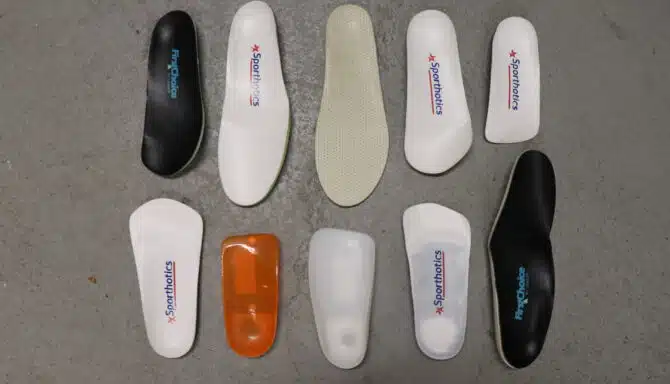Bunions, those bony bumps that develop at the base of the big toe, can be a source of discomfort and pain for many individuals. Bunions are common: they affect roughly 23% of adults and are more frequent in women than men.
Beyond foot aesthetics, bunions lead to difficulties with walking and wearing certain types of footwear. That’s why understanding what bunions are, how to prevent them, and the available treatment options is crucial for maintaining healthy feet.
What are bunions?

Bunions, medically known as hallux valgus, are deformities of the metatarsophalangeal (MTP) joint, which connects the big toe to the foot. They typically form when the big toe leans toward the second toe, causing a misalignment of the bones. As a result, a bony protrusion, or bunion, develops on the side of the foot.
Common causes of bunions include:
- Genetics: Bunions can run in families, suggesting a hereditary component.
- Footwear: Wearing shoes that are too tight, narrow, or high-heeled can increase the risk of bunions.
- Foot structure: Abnormal foot mechanics or structure, including flat feet, may contribute to the development of bunions. The risk of bunions is more significant in people with weak connective tissue, a short Achilles tendon, short calf muscles, or joint diseases such as rheumatoid arthritis. Bunions can also result from having a flat foot.
- Medical conditions: Certain conditions, like rheumatoid arthritis, can make individuals more susceptible to bunions.

How to prevent bunions
While bunions can be influenced by genetics and foot structure, there are several steps you can take to prevent their formation or slow their progression:
Wear proper footwear
Choose shoes with a wide toe box that allows your toes to move comfortably. Avoid high heels and shoes with a pointed toe.
Orthotic inserts
Consider using orthotic inserts to support proper foot alignment and reduce the pressure on your big toe joint.
Maintain a healthy weight

Excess weight can place additional stress on your feet, so maintaining a healthy weight is essential.
Foot exercises
Perform regular exercises to strengthen the muscles and improve the flexibility of your feet. Read our dedicated blog post about five simple exercises we recommend for bunions.
Toe spacers
Toe spacing devices can help keep your toes properly aligned and may help reduce the risk of bunion development.
How to treat bunions
If you already have bunions, or if preventive measures are not effective, there are bunion treatment options available:
Conservative measures
Non-surgical bunion treatment can include:
- Wearing wider, more comfortable shoes.
- Using padding to protect the bunion.
- Taking over-the-counter pain relievers.
Orthotics
Custom orthotic insoles can help redistribute pressure on your feet and alleviate bunion-related pain.
Physical therapy
Physical therapy can improve joint function and alleviate discomfort.
Bunion splints
These devices are worn at night to help realign the big toe.
Surgery
If conservative measures fail or the bunion is severely painful and affects daily life, surgical correction may be necessary. Several surgical techniques are available, with the choice depending on the severity of the bunion and the patient’s needs. The three primary surgeries for bunion are exostectomy, osteotomy, and arthrodesis.









